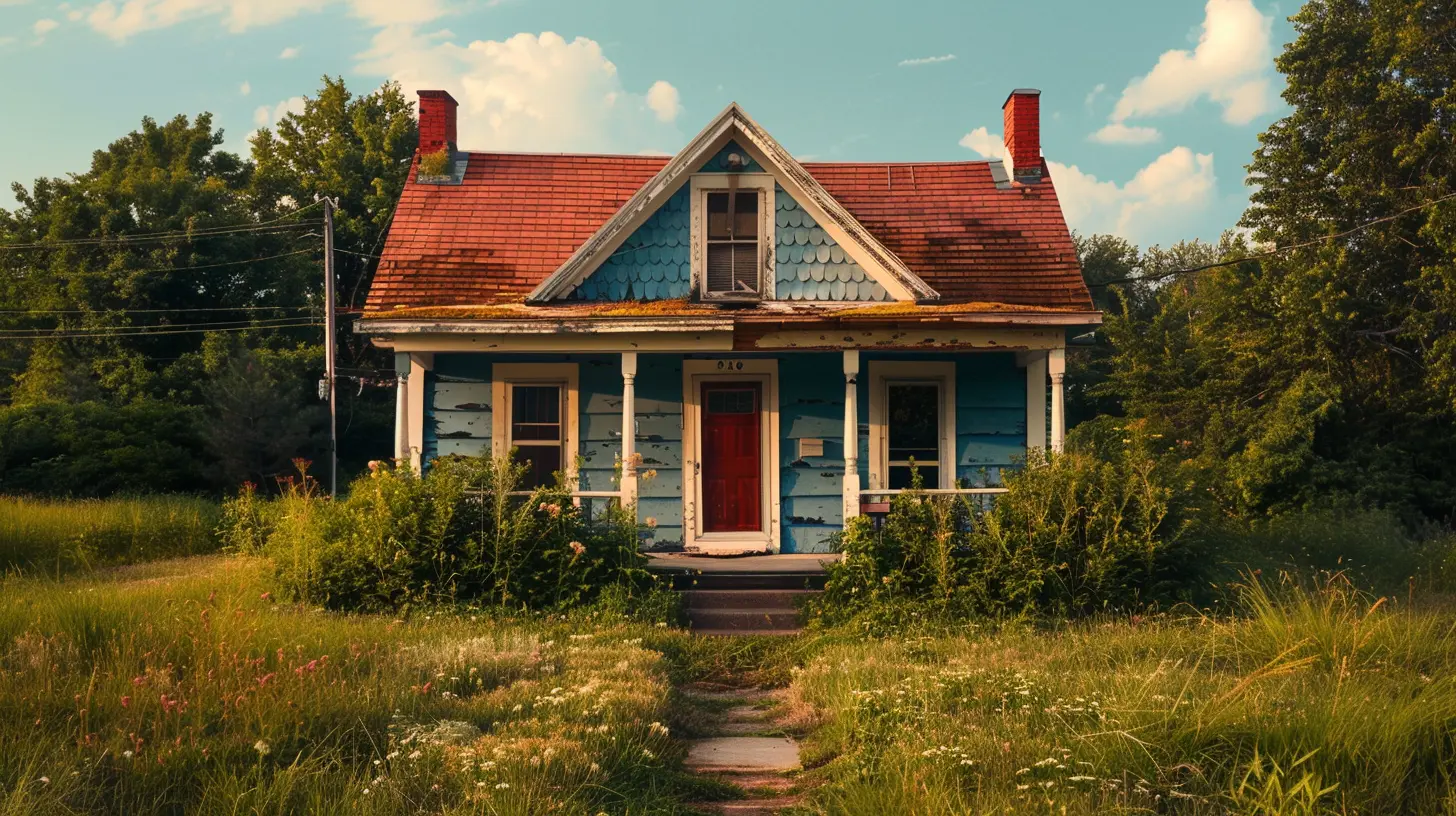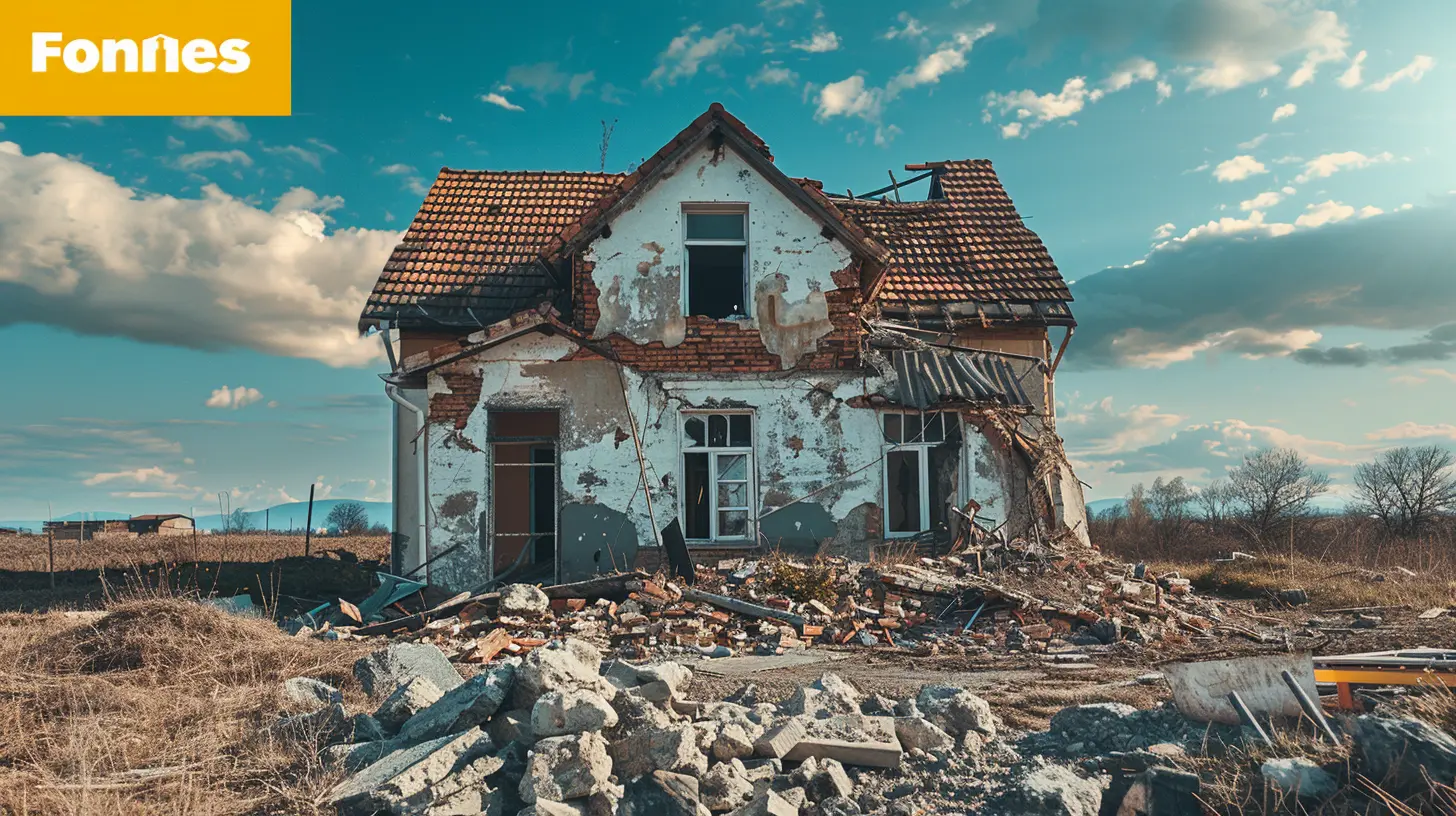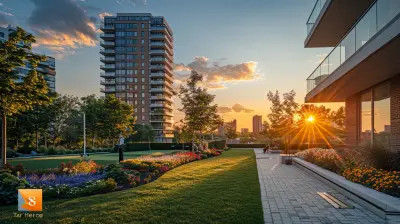23 April 2025
Renovating a foreclosed home can feel overwhelming—like stepping into a forgotten treasure chest, not knowing what you’ll find. But guess what? It’s totally doable to bring that home back to life without breaking the bank. Whether you're looking to flip it, live in it, or rent it out, with some careful planning and elbow grease, you can transform it on a budget. Let’s walk through the steps together so you can tackle your project with confidence and maybe even a little excitement! 
Why Consider Buying a Foreclosed Home?
Before we dive into the nitty-gritty of renovating, let’s address the elephant in the room: why a foreclosed property?Foreclosed homes are typically priced below market value, making them an attractive option for first-time buyers or savvy investors. They’re like that scruffy, overlooked puppy at the shelter—they just need a little TLC to shine. But let’s be real: foreclosures often come with some quirks (think leaky roofs, outdated wiring, or that suspiciously green “carpet” in the backyard).
This is where the fun begins—okay, maybe "fun" isn't the word you'd use while sanding floors, but the satisfaction of turning a fixer-upper into a dream home? Priceless. 
Step 1: Have a Game Plan
If you’re tackling a foreclosed home renovation, planning is non-negotiable. Remember, flying blind into a renovation is like grocery shopping on an empty stomach—you’ll overspend and probably regret half your decisions.Assess the Property's Condition
Take a good, hard look at what you’re working with. Is the foundation solid? How’s the plumbing? Any signs of mold or pests? Bring in a professional inspector if you can. They’ll spot issues you might miss, and trust me, paying for an inspection is way cheaper than fixing a collapsed roof you didn’t know about.Set a Budget—and Stick to It
Decide on your total budget, then add a 10–15% cushion for unexpected surprises. Because, let’s face it, there will be surprises.Break down your budget into categories like structural repairs, cosmetic updates, labor, and materials. Think of your budget as a roadmap—it’ll keep you from veering off and blowing all your cash on fancy countertops while ignoring the busted heating system.
Prioritize Repairs
Not all renovations are created equal. Focus first on what’s absolutely necessary:- Safety issues (e.g., electrical hazards, structural damage).
- Major systems like plumbing, HVAC, and roofing.
- Weatherproofing—nobody wants rain dripping through their ceiling.
Once the essentials are covered, you can move on to cosmetic upgrades that'll make the space feel like home. 
Step 2: Do It Yourself (But Know Your Limits)
DIY can save you a ton of money. But there’s a fine line between "I can totally do this!" and "Why is the wall falling down?"What You Can DIY
There are plenty of tasks you can handle yourself—even if you’re not exactly a pro:- Painting walls and ceilings (a fresh coat of paint works magic).
- Installing new fixtures like faucets and light switches.
- Laying down laminate flooring.
- Updating hardware, like cabinet knobs and handles.
What to Leave to the Pros
Some renovations are better left to the experts. If it involves electricity, gas, or major structural changes, call in a professional. It’s not worth risking your safety to save a buck.Think of it this way: Would you perform your own dental surgery? No? Then maybe don’t mess with the wiring. 
Step 3: Get Smart About Materials
Renovating a home on a budget doesn't mean you have to settle for cheap, flimsy materials. Be strategic about where you source your supplies.Shop Secondhand and Discount Stores
Check out Habitat for Humanity’s ReStores or other secondhand home improvement shops. They often have gently used (or even brand-new) items at a fraction of retail price.Salvage yards are another goldmine for things like reclaimed wood, vintage doors, and unique fixtures. It’s like treasure hunting for your home!
Repurpose and Upcycle
Before tossing anything, ask yourself: “Can I reuse this?” That dated dresser could become an adorable bathroom vanity, or those old wooden pallets might make a rustic accent wall.Step 4: Balance Style and Function
Once the basics are out of the way, it’s time to add some personality to your home. But don’t go overboard. Think of it like dressing up for a first date—you want to look amazing without trying too hard.Focus on Small Details
Sometimes it’s the little things that make the biggest difference. New light fixtures, modern cabinet hardware, or a bold backsplash in the kitchen can completely change the vibe of a space without draining your wallet.Paint Is Your Best Friend
I’ve said it before, and I’ll say it again: paint is magic. Whether it’s brightening up a dark room or covering up an eye-sore, a few cans of paint can transform your home for cheap.Add Value with Cost-Effective Upgrades
Think about upgrades that make your home more livable and valuable, like energy-efficient appliances or a fresh front door. Not only do these updates make life easier, but they also appeal to future buyers.Step 5: Embrace the Process
Renovating a foreclosed home isn’t just about the finished product; it’s also about the journey. Sure, there might be days when you’re covered in dust and wondering why you thought this was a good idea. But when you see your hard work pay off? Totally worth it.Think of each project as a step closer to your dream home. Celebrate the small wins (hung a shelf without it falling? High five!) and remind yourself why you started.
Tips for Staying on Budget
- Get multiple quotes. Don’t go with the first contractor or supplier you find. Shop around for the best price.- Go room by room. Trying to tackle everything at once can be overwhelming and lead to overspending.
- Do some of the grunt work. Even if you hire pros, you can save money by doing the demolition or cleanup yourself.
- Be patient. Renovating on a budget takes time. That Instagram-worthy kitchen might not happen overnight, but it’ll be worth the wait.
Final Thoughts
Rebuilding and renovating a foreclosed home on a budget isn’t for the faint of heart, but it’s one of the most rewarding projects you can take on. With a solid plan, a little creativity, and some sweat equity, you can transform what was once neglected into something truly special.And hey, that sense of pride when you show off your hard work? That’s something money can’t buy.




Kaleb Rios
Rebuilding a foreclosed home on a budget requires careful planning, prioritizing repairs, and seeking cost-effective materials and labor solutions.
April 25, 2025 at 12:02 PM